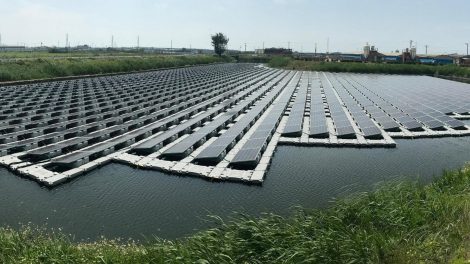Med means energy. That’s the key takeaway from Monday’s OME meeting, hosted in Rome by Italian energy utility Edison.
- The think tank, which functions as an observatory of energy issues in the Mediterranean area and a cooperation platform connecting academics and industry representatives, brought the latters together for a series of panels on the area’s investment needs and infrastructure financing.
It’s crunch time. In light of the current international situation, timing and topic couldn’t be more accurate, noted Edison’s Director of institutional Affairs Simone Nisi, since the Russian invasion of Ukraine prompted Europe to start diversifying away from Russian gas.
- “Now that energy diversification and cooperation are at the top of the institutional agenda, European and Southern Mediterranean countries have a unique opportunity to foster energy collaboration by building new bridges, leveraging our partnership and jointly developing effective solutions for the energy transition,” noted Mr Nisi in his introductory speech.
Reality check. OME’s Chairman and Eni’s Director of Public Affairs, Lapo Pistelli, pointed at the need to realign the conversation between the two shores of the Med.
- History has shown the destiny of the two shores to be closely linked. Thus the need to align the pace of the transition and tech, regulatory and business-to-business cooperation to speed up the transition process on both sides.
Italy’s time to shine. In the past, Mr Pistelli continued, being a Southern European country was something of a liability. Today it’s an advantage, given the country’s ability to reach out to partners in the MENA area and its potential for becoming a European green energy hub.
- “We can see that the European Commission is listening to Europe’s Mediterranean and African countries more closely to understand how we can tackle together the issue of the energy mix.”
Measuring the reserves. Sourcing methane from the MENA area to partly replace 150 yearly billion cubic metres (bcm) from Russia won’t be easy for the EU. Especially given the infrastructural limitations and the imperative of carrying out the energy transition in the meanwhile.
- Sohbet Karbuz, Director of OME’s Hydrocarbons Division, noted that the share of South Mediterranean gas in the EU’s supply is 13% – but the amount could double, from 40 bcm last year to 80 within the next five years and 2030, simply by investing and reactivating dormant extraction projects.
- On top of that, if Azerbaijan is included, export capacity toward the EU could again double from 50 to 100 bcm a year.
- “Reserves are not a problem,” he said, “but we need cooperation and a more investment-friendly environment for these regions.”
Keep it real. Laurent Ruseckas, Executive Director at S&P Global, described the EU’s REPowerEU package as an effective, albeit insufficient, way to take advantage of the gas crisis by doubling down on decarbonisation and policies on top of the existing For for 55 plan.
- “If the objectives are achieved (they won’t), you could phase out gas,” he said, adding that some of those are simply not realistic.
- Hydrogen, for instance, is not viable by 2030; “2035 is a more likely date as we see it”. Still, he added, building up hydrogen-compatible gas capacity is crucial.
And think green hydrogen… Silvia Pariente-David, Senior advisor and consultant on energy and climate change issues at the World Bank, also spoke of hydrogen’s potential – especially in the Med area, where natural resources allow for the production of green hydrogen.
- European gas demand will eventually falter and fall as the transition progresses, she said, but there’s still a case for building pipes: they might be repurposed for hydrogen transport.
…which needs time to breathe. Confindustria Energia’s Roberto Potì also confirmed that blending methane and hydrogen is the way forward – and that it’s best to start early with infrastructure investments, as “changing molecules will require time and money.”
- Not only is it crucial to give the industries time to adapt: we also must understand what ends up being the better solution, he said. For instance: will it be more convenient for companies to rely on pipeline-delivered hydrogen, or will they be better off moving the production onsite by installing an electrolyser?





